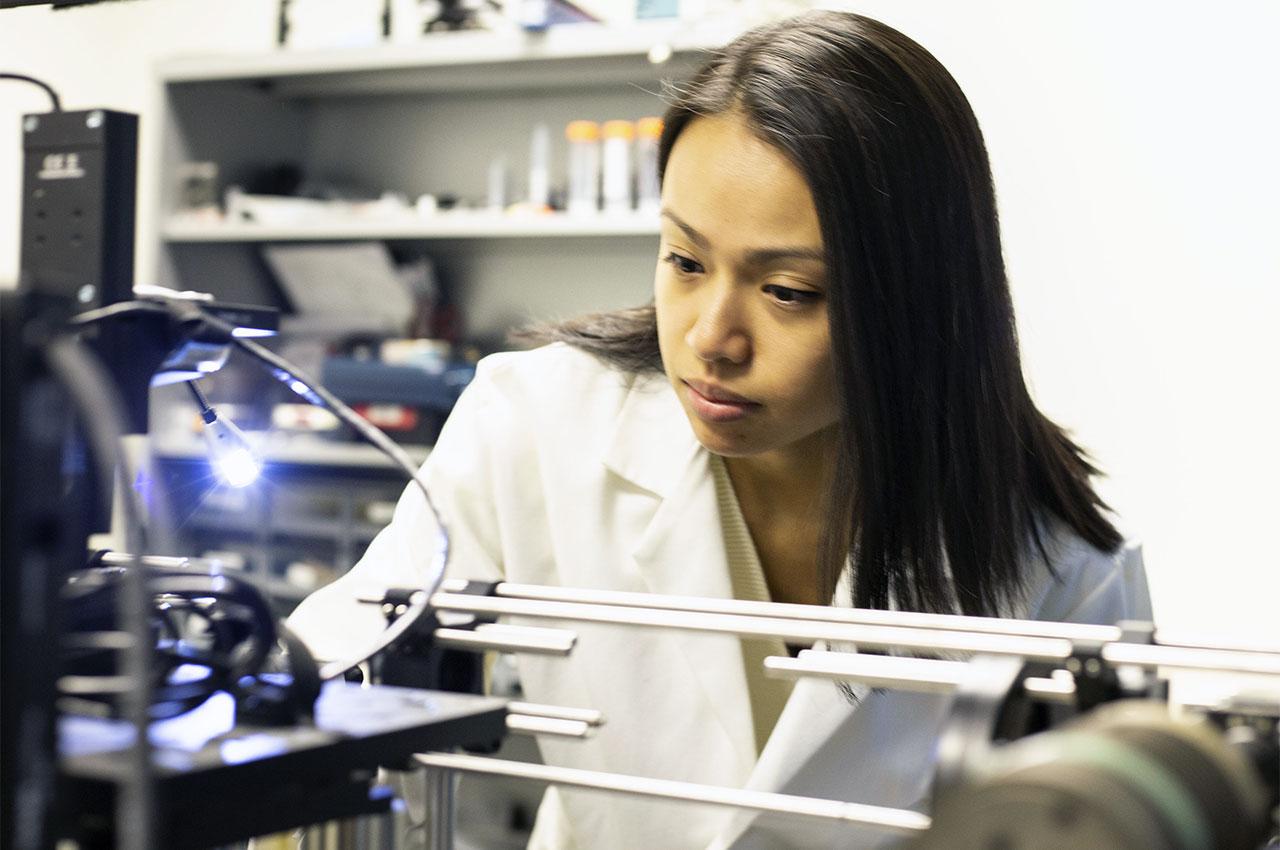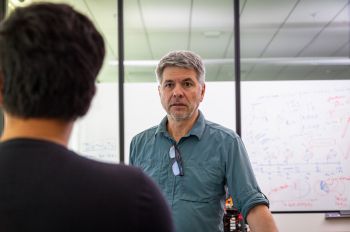Innovation, Collaboration Sparked by Nayar Prize
Faculty, Students Work Together to Advance Cancer Screening Technology

What began as pleasant conversations during coffee breaks evolved into a collaboration to develop a new cancer screening imager and two faculty-researchers landing the final award of the inaugural $1 million Nayar Prize.
Illinois Tech’s Kenneth Tichauer, associate professor of biomedical engineering, and Jovan Brankov, associate professor of electrical and computer engineering and director of the Advanced X-ray Imaging Laboratory, would run into each other regularly while working at the university’s Medical Imaging Research Center (MIRC).
“Every collaboration starts with a good relationship,” Brankov explains. “Ours happened to start at the coffee machine. We were sharing ideas and projects that we were working on. That’s how we started talking. When the Nayar Prize was announced, we started talking in depth.”
“We worked together a little bit on administration of the MIRC, but there was no research-related collaboration,” Tichauer says. “Based on the challenge of the Nayar Prize to develop cross-departmental collaborations, Jovan and I recognized that his imaging-system development expertise and my quantitative molecular imaging of cancer expertise could lead to unique solutions in cancer diagnosis and detection.”
Together, they developed the Agent-Dependent Early Photon Tomography System Cancer Imager, which allows pathologists to determine if breast cancer has metastasized into a patient’s lymph nodes at earlier stages and with increased accuracy through the combination of a two-step dyeing process and laser imaging.
Fostering interdisciplinary collaboration to spur innovation is one of the stated goals of the Nayar Prize.
In 2015 Illinois Tech Trustee Madhavan Nayar (M.S. IE ’68) and his wife, Teresa, on behalf of the Nayar Family Foundation, established a $1 million gift to fund the initial Nayar Prize package, challenging university faculty, staff, and students to develop breakthrough innovations that will produce meaningful results with a societal impact.
Collaboration among faculty isn’t the only intent of the prize. Students, too, are encouraged to participate in the innovative research.
Veronica Torres (BME Ph.D. candidate) helped build the prototype and reconstructs the ADEPT images by computer for analysis. She says she could see instant benefits of the project, which excited her about joining the team.
“I could see the impact right away,” Torres says. “Research is a basic tool for helping people. And here was a clear picture of what research can fix.”
Cynthia Li (BME Ph.D. candidate) contributes to the project in the wet lab. She has been harvesting lymph nodes from pig carcasses that she gets from a local butcher, and implants cancer cells from a culture into the nodes. She also helped perfect the two-step dyeing process. She says she was attracted to the project while she was performing cancer screenings at Northwestern Hospital. It was there Tichauer explained the ADEPT project to Li.
“It was so useful to see the problem in the field,” she says. “And it’s so inspiring because I think it can work in other applications.”
Lagnojita Sinha (Ph.D. BME ’18) worked on the ADEPT project from its inception in 2015 until she graduated. She says the recognition from the prize committee motivated the team during the challenging process.
“We started with nothing in the lab,” Sinha says. “After about two and half years, we saw the first human lymph node images. It was a long process, but I loved it when we saw those first images. It was beautiful.”


![[From left to right] Associate Professor of Biomedical Engineering Kenneth Tichauer and Professor of Electrical and Computer Engineering Jovan Brankov](/sites/default/files/styles/width_350/public/2024-11/tichauer-brankov_1280x850.jpg?itok=hxdjBhlU)

